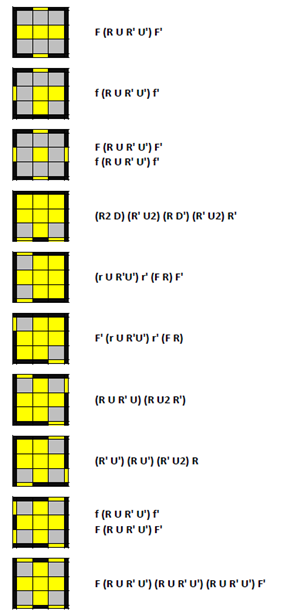
Say you see the block 236 (not connected to either 1 or 9). For instance, if you see the block 1236 (not connected to 9), the only possible case is (79)(48), a J-perm. Learning the block pattern for each permutation allows us to do recognition often from two adjacent sides. We recognize each case by its particular pattern of blocks. (37)(48), the Y permutation, has blocks 12 and 69-also two 2x1 blocks, but in a different arrangement. For example, (46)(39), the T permutation, has blocks 12 and 78.

Each permutation has a unique pattern of connected pieces that form blocks. Two adjacent top-layer pieces are connected if they have the same color on the same side. Refer to your keyboard's numpad for the following description (props to Timothy Wang for the idea). Rather than systematically matching corners or edges, I recommend using "blocks" for recognition. Recognition takes longer for PLL than for OLL because we often need to adjust the U face (AUF) before we can determine the case. (You might be thinking, "aren't you then allowing the method of timing to influence, if only slightly, the method?" Yes! The 100-meter dash analogy shows why this is reasonable: here, here, and here.) Recognition and AUF Keep in mind that you don't need to worry about cube turns and that you need to put down the cube to stop the timer.

Even for the same algorithm, try chunking into different substeps or changing the grips. PLL, the last step of CFOP, permutes all last-layer pieces while preserving their orientation.Īlso see other cubers' lists to find your favorite algorithms.


 0 kommentar(er)
0 kommentar(er)
